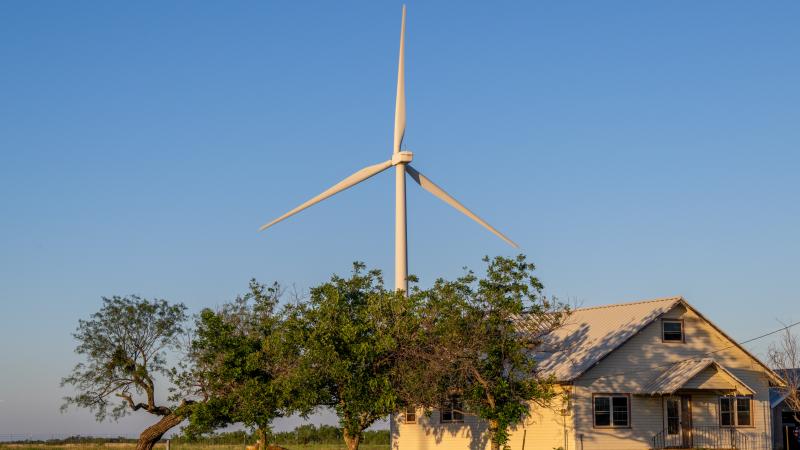Newsom orders review of why CA electricity is expensive with renewable mandate
Newsom’s roadmap to transition the state to 100% clean energy by 2045, and 90% by 2035 offers some clues.
(The Center Square) — California Gov. Gavin Newsom signed an executive order for the state to examine why the state's electricity costs double the national average, seek more federal funding, shift more costs for electric companies currently paid for by users to state or federal taxpayers, and increase biannual cash transfers to consumers from the state’s carbon credit system — which, next week, could add an additional $162 billion cost to consumers for energy.
Data from the federal Energy Information Agency for July 2024 says California gets 45% of its energy from natural gas, which in California is more than ⅓ cheaper than the national average, so why does overall electricity cost nearly double the national average?
Newsom’s roadmap to transition the state to 100% clean energy by 2045, and 90% by 2035 offers some clues.
“California still depends on fossil gas-fired electric generation to maintain a reliable electric grid. The old electric grid was largely stable with predictable demand patterns and little load growth - but climate change has made our old grid more vulnerable and created greater urgency to modernize it,” wrote Newsom’s office in its 2023 clean energy transition plan. “To provide 100% clean electricity, current studies show California will need to build an additional 148,000 MW of clean energy resources by 2045.”
“Total customer energy costs will shift because more daily activities will be electrified. Instead of paying at the gasoline pump, Californians will pay their electric utility to fuel their vehicles,” continued the report. “As more household appliances are electrified, customers can expect to use more electricity and less gas.”
Much of that capacity is expected to come from solar, which has been heavily subsidized by the state and has received $107 billion in investments in California through 2023. Language in the governor’s executive order indeed suggests that the state’s controversial solar subsidy program, which constitutes large wealth transfers from non-property owners to property owners in installation subsidies and monthly solar payments, could be up for debate. Under the state solar subsidy program, approximately 15% of the average non-solar household’s energy bill goes towards rooftop solar payments to wealthier property owners who have usually installed such systems with additional taxpayer subsidies.
The state also aims to invest significantly in offshore wind power, which the state says will require $12 billion in investments in just the state’s ports to be able to start building the system, which will require up to $27.4 billion for California’s portion of transmission lines connecting offshore Northern California wind to California consumers. Total cost estimates to build 25 gigawatts in peak wind capacity — or about 10 gigawatts of real baseload capacity due to wind’s unreliability — range up to $300 billion.
In addition to being able to transfer all this renewable energy, California must make an additional $20 billion in transmission upgrades to be able to handle charging the state’s electric vehicles, a cost that does not include billions of dollars more for the cost of rapidly-evolving chargers that have been doubling in charging speed every few years.
It’s unclear how the state aims to pay for these changes, aside from Newsom’s push in the order for more state and federal taxpayer support.
The state’s existing baseline renewable energy, which comes from nuclear, geothermal, and hydropower — water from dams pushing turbines — could offer some more cost-effective alternatives.
Cost-effective hydropower, which is one of the most reliable forms of renewable energy other than geothermal and enables water storage through the creation of dams and reservoirs, appears to be off the table as the government pursues a policy of dam removal.
Geothermal energy — by which heat from the earth is used to turn turbines — is also cost effective, but is limited by the number of geothermal sites.
Diablo Canyon Power Plant, the state’s last nuclear power plant, provides 2.2 gigawatts of energy at a per-kilowatt that is more than ⅓ cheaper than what operator Pacific Gas and Electric paid other suppliers. Diablo cost approximately $18 billion in current dollars to build. While it will cost an additional $8.8 billion to keep Diablo running through 2030, MIT estimates not shutting down the plant could save Californians $21 billion through 2045.
“The Governor and Democrats must take a hard look at the policies that have brought us to this point and embrace bipartisan solutions to fix California,” said State Sen. Marie Alvarado-Gil, R-Jackson, to The Center Square. “Next week, CARB millionaires are poised to vote on a policy that could raise gas prices by as much as 65 cents per gallon, yet the public is largely unaware. Who will be held accountable? California families deserve transparency in government and real, long-term solutions.”
On November 8, California’s Air Resources Board is set to vote on a proposal to increase the cost of California’s carbon credits by approximately $162 billion through 2046, a cost that will largely be carried by Californians but also most Americans, as the bill will significantly increase the cost of all transportation in and through through California — whether trucks, buses, cars, or airplanes.
The governor’s office noted Californians get two $71 payments per year from the carbon credit system, or an average of $11.3 per month; given California’s estimates that LCFS will raise gasoline costs per gallon by 35 cents next year, and that the average consumer stops to buy fuel 10.6 gallons of fuel 5.8 times per month. This means the new carbon standard would add about $21.52 per month to the gasoline costs of the average average Californian, or about twice as much as what one would receive from the small carbon credit payment.













